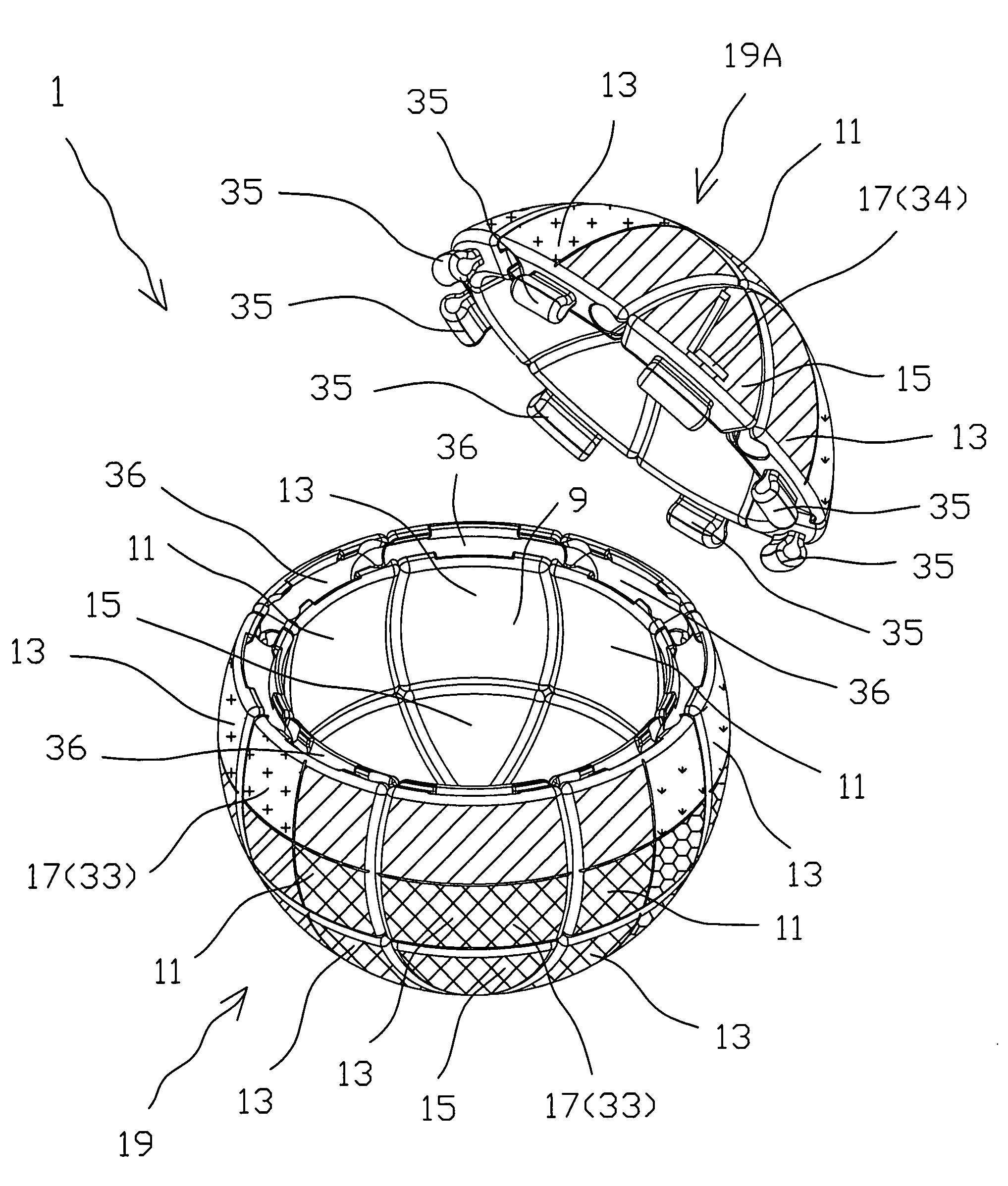Three-dimensional puzzle
a three-dimensional puzzle and puzzle technology, applied in the field of three-dimensional puzzles, can solve the problems of increasing the design complexity and cost correspondingly, causing additional problems, and affecting the overall effect of the puzzl
- Summary
- Abstract
- Description
- Claims
- Application Information
AI Technical Summary
Benefits of technology
Problems solved by technology
Method used
Image
Examples
Embodiment Construction
[0059]Preferred embodiment of the present invention will be described in detail below with reference to the accompanying drawings.
[0060]FIGS. 1-29 show embodiments of the present invention.
[0061]The three-dimensional puzzle 1 comprises of elements 2 formed as a result of splitting of a three-dimensional shaped body 3 by three pairs 5 of coaxial identical right circular conical surfaces 6 (FIGS. 1-6). The three-dimensional shaped body 3 has a hollow sphere 4 inside with a center O and three mutually perpendicular main axes OX, OY and OZ (FIG. 1), thus defining three main planes XOZ, XOY and YOZ. For the simplification only one pair 5 of the conical surfaces 6 and 6A is shown on FIGS. 2 and 3. The axes of each pair 5 coincide with one of the main axes correspondingly. On FIG. 2 the axis of the pair 5 is coincided with the main axes OX, while on FIG. 3 the axis of the pair 5 is coincided with the main axes OZ. Both conical surfaces 6 of each pair 5 are symmetrical in respect with the c...
PUM
 Login to View More
Login to View More Abstract
Description
Claims
Application Information
 Login to View More
Login to View More - R&D
- Intellectual Property
- Life Sciences
- Materials
- Tech Scout
- Unparalleled Data Quality
- Higher Quality Content
- 60% Fewer Hallucinations
Browse by: Latest US Patents, China's latest patents, Technical Efficacy Thesaurus, Application Domain, Technology Topic, Popular Technical Reports.
© 2025 PatSnap. All rights reserved.Legal|Privacy policy|Modern Slavery Act Transparency Statement|Sitemap|About US| Contact US: help@patsnap.com



